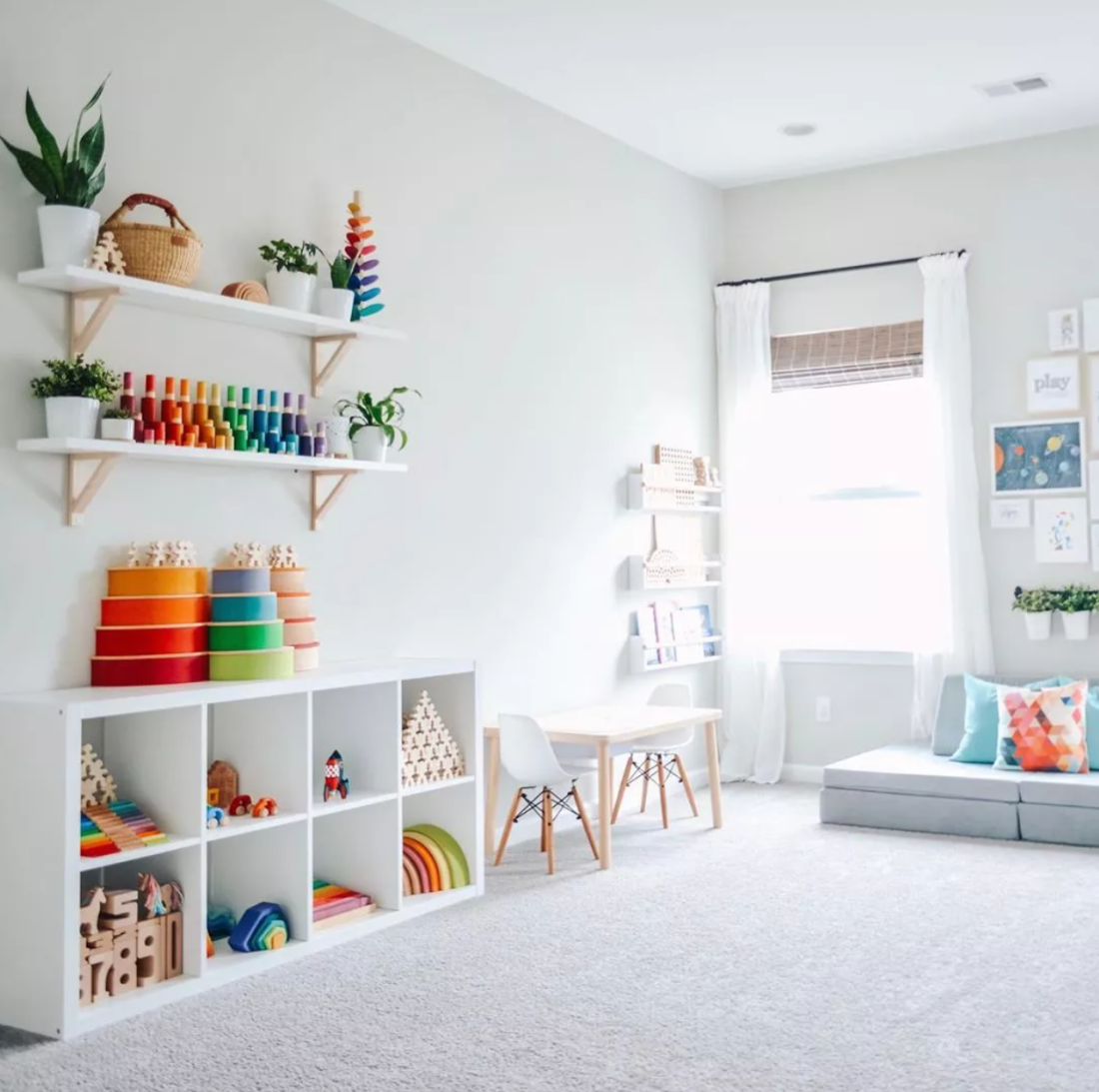The arrangement of a children’s room plays a huge role in the life of small family members. For the child to be in comfortable conditions, it is necessary to think over every little thing. In this article, we will tell you what options exist for arranging a children’s room, how to create a cozy atmosphere in it, and also consider typical mistakes.

A children’s room is a special place to spend time: sleep, play, study, and store things. To make the room functional, you need to divide the space into three parts: a sleeping place, a play, and a study area. For a preschooler, the priority is the play area, and for older children, the study area.
It is better to equip the workplace by the window, where there is a lot of natural light. If possible, the sleep zone should be moved away from the door so that the child has a sense of security. For games, it is better to allocate a place in the center of the room on a soft carpet, providing access to daylight.
Game Zone
The play area should be safe and interesting. Do not clutter up this space with voluminous toys, it is better to make it free and give the child a place for creativity. In the play area, you can place a Swedish wall and a table for playing with sand and water, cover the wall with slate paint. The more conceptual the entertainment, the better the child’s vision works and the more possibilities for fun.
Study area
To make it convenient for the child to study, it is important to choose an ergonomic table, chair, and lighting. It is best to choose such furniture so that it grows with the child: the bed becomes larger, and the table and chair are higher. The light should be bright and without sharp shadows – this way your eyes will be less tired. To help the student, you can hang a geographical map, tables on subjects, and reminder posters that will help you collect your portfolio and do your homework.
When arranging a place for classes, it is important to take into account the individual characteristics of the child: how attentive and diligent he is, whether he quickly grasps information, whether he needs reminders, and illustrative examples. For example, if the child is not very diligent, you should not make a study area opposite the window: he will often be distracted. For the same reason, all helper posters should be located a little further from the workplace.
Sleeping place
A properly organized bed can improve a child’s sleep.
- The size of the bed should fit the height of the kid (his legs should not rest against the back of the bed).
- Choose bed linen in pastel shades from satin, chintz, or calico. It should be soft, without bright patterns. Colorful underwear can distract from sleep, and bright colors can excite the nervous system.
- Try to make the bed cozy so that the child likes to be there.
- Use bed rails for added security and safety, learn more in this guide on snooze.net.
For the child to sleep well, dim the lights in the apartment 1.5–2 hours before bedtime and close the windows with thick curtains. The hormone melatonin, which is responsible for sleep, is produced only in the dark, so it is better to refuse any light, including a night lamp, during sleep.. melatonin levels, often cause children to wake up at night and feel tired in the morning.
How to choose the right colors
On the emotional state of the child. Some shades cause melancholy and depression, others – joy and inspiration. Therefore, it is important to correctly choose the color scheme for the nursery. The main rule is not to oversaturate the room with one color and not make it too bright. It is better if the room is in soothing pastel colors with bright accents on the walls or decor items.
How to create a comfortable environment
Choosing furniture
Children explore the world around them and test everything for strength: swinging on chairs, jumping on the bed, dismantling the contents of cabinets. Bean bag chairs would be a nice choice for the children’s room. It’s part of growing up, it’s not worth swearing over such pranks. Another thing is that the furniture must withstand children’s experiences. Furniture should be practical, functional, but not bulky – this can overwhelm the child. Opt for furniture in neutral tones. Bright cabinets, a bed, and a table will quickly bother the child, and buying a new one will be expensive. It is better to make color accents on decor items: posters, lamps, pillows, and a bedside rug.
Organize the storage
Children can be taught to order thanks to the correct arrangement of the storage system. To help your child clean up toys and other items, place them in small containers at eye level. Containers should be comfortable for children’s hands and easy to slide out. Stick a photo label on each that shows what is where. However, the containers themselves will not teach anything – adults should lead by example.




